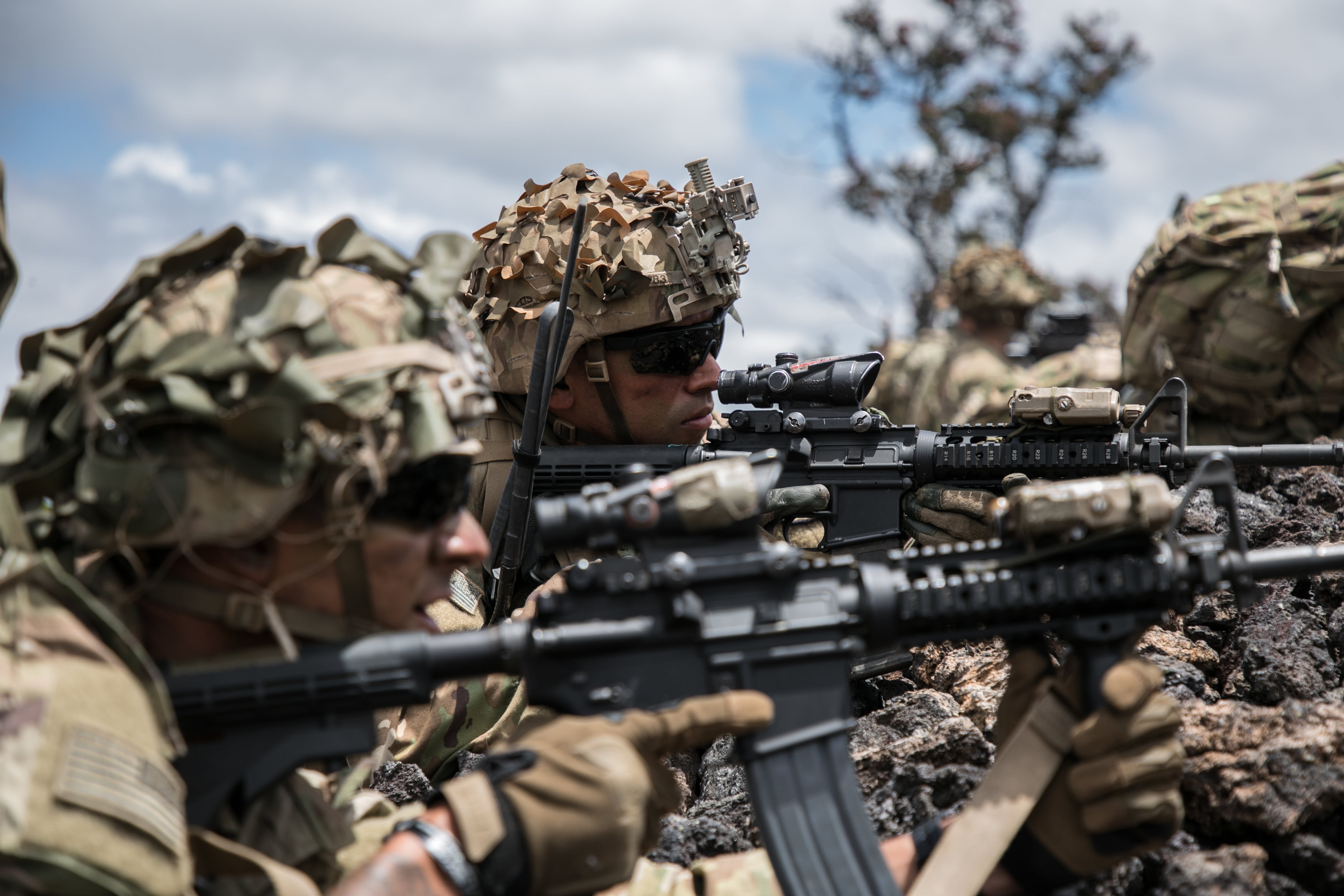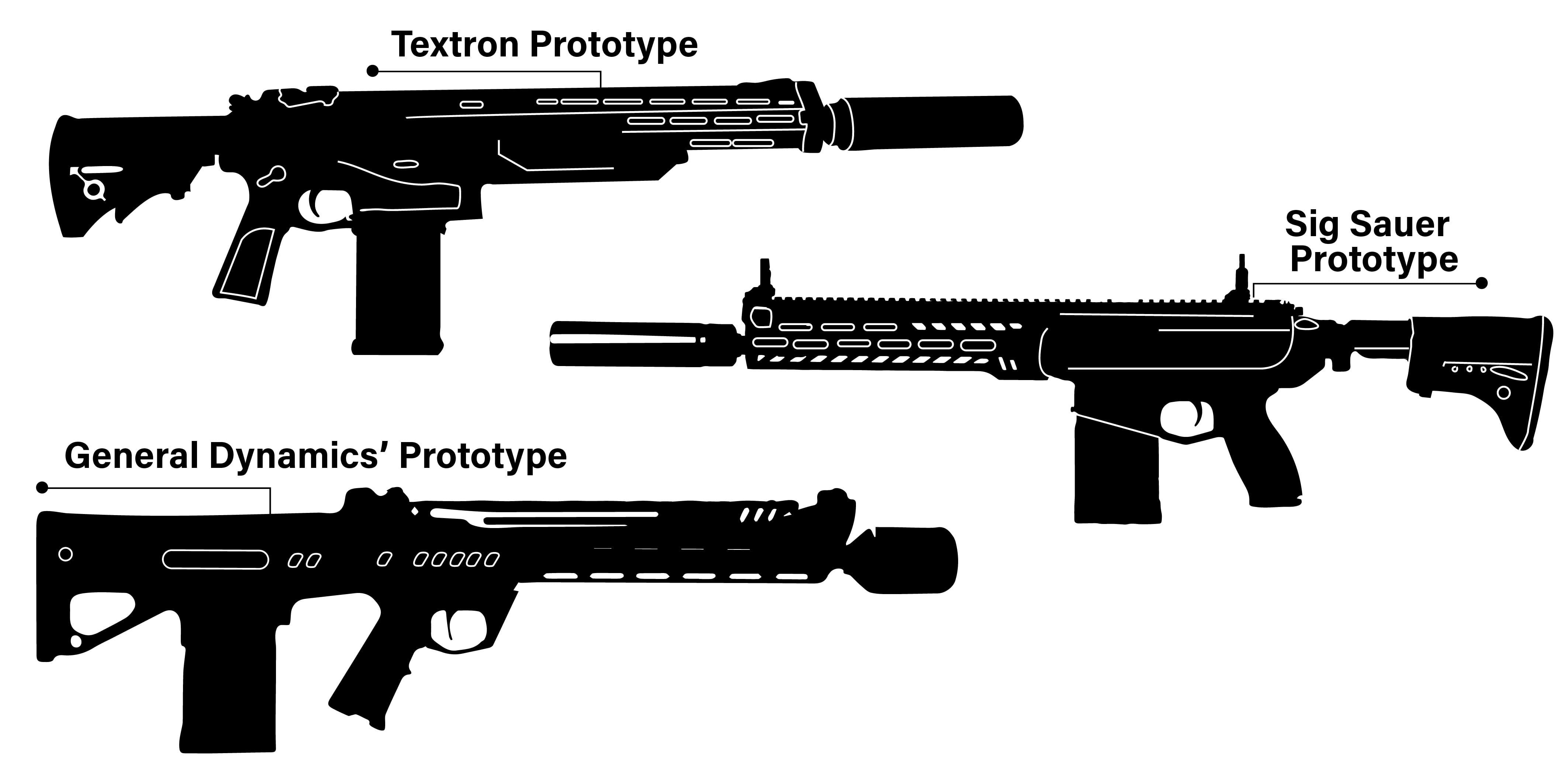Over the next five years, the Army plans to buy a mix of more than 120,000 new light machine guns and rifles, built around new ammunition, to replace both the M4 carbine and M249 Squad Automatic Weapon for select soldiers.
Army officials are asking for $111 million to continue prototyping the Next Generation Squad Weapon through the next fiscal year in their recent budget request. The NGSW program was designed to replace the standard rifle and squad machine gun, but only for close-combat units such as infantry, scouts and possibly combat engineers. And the procurement numbers show that only around a quarter of the 485,000 active-duty soldiers might get a chance to carry the weapon.
The three contractors selected last year — Sig Sauer, General Dynamics-OTS and Textron Systems — are expected to deliver 38 prototype rifles and 28 prototype automatic rifles along with 660,000 rounds of ammunition for testing and soldier evaluations next year, according to budget documents.
RELATED

The Army plans to pick the winner and announce the production award by late 2021, according to budget documents.
At the same time, the service is developing an advanced fire control system for the new 6.8mm rifle and automatic rifle. It’s intended to go far beyond optics currently used by soldiers on their light carbines and rifles.
The Army wants the unit to include a variable-powered optic for short and long range shooting, an integrated range finder, ballistic calculator and digital display capable of providing an adjusted aim point, according to budget documents.
And procurement for those fire control systems give a hint at how quickly the inventory of NGSW will accumulate. They want to buy nearly 4,000 next fiscal year, doubling that number for 2023 and 2024 until by fiscal year 2025 they’ve purchased a total of 121,773.
The price tag for the first 4,000 units is estimated at nearly $36 million, according to budget documents.
That’s just for the active-duty soldiers.
Army National Guard and Army Reserve soldiers won’t see the new system purchase begin until fiscal year 2023 and will have fewer headed their way.
The Guard is schedule to procure 25,541 through fiscal year 2025. The Reserve is slated for 687 units in the same period.
That’s not a slight to the Guard and Reserve, but instead telling on how the weapon and its optic will field – prioritized to infantry and close-combat forces.
Much the same way that the Soldier Lethality Cross Functional Team has focused initial gear and training at improvements to the close-combat force – infantry, cavalry scouts, engineers and special operations forces.
A big part of the weapon’s development has centered around its ammunition. The 6.8mm decision came after years of evaluation and study, and debate, in small caliber circles. Early efforts also looked at 6.5mm to fill the niche between the existing 7.62mm and 5.56mm currently in the arsenal.
Army officials want a caliber that’s lighter than the 7.62mm currently used in some sniper systems and medium machine guns such as the M240.
But they want it to be as lethal or more at longer ranges to increase squad “overmatch” against peer and violent extremist adversaries, many of which use small arms that outrange the 5.56mm round common to the M4 and M16 used by nearly all soldiers.
Funding in the budget will also go toward continued development of the general purpose 6.8mm round and a reduced range round so that soldiers can practice on existing 5.56mm ranges with the new caliber, that is designed to shoot farther than some of those ranges are designed to accommodate.
The Army is also developing an armor-piercing 6.8mm round but did not request funding for that project in this year’s budget.
Todd South has written about crime, courts, government and the military for multiple publications since 2004 and was named a 2014 Pulitzer finalist for a co-written project on witness intimidation. Todd is a Marine veteran of the Iraq War.
